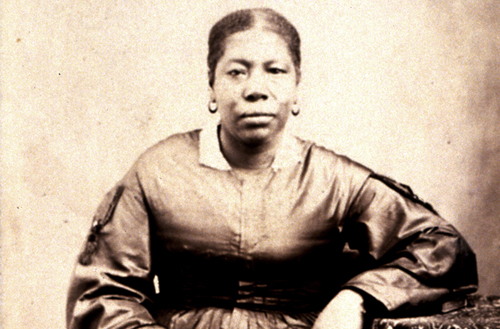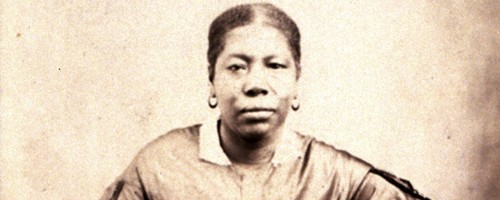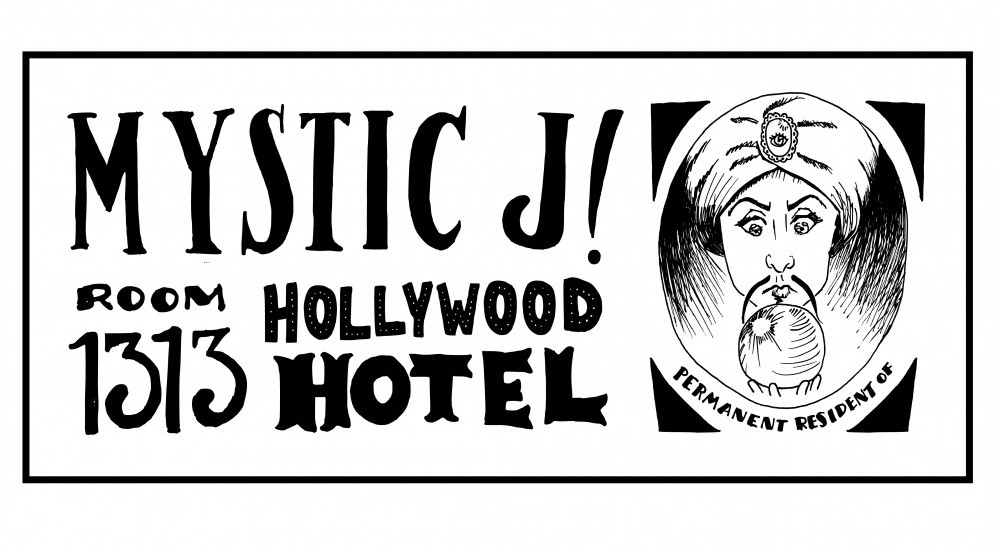Quincy Newell, an associate professor of religious studies at the University of Wyoming, will discuss the history and practices of early Latter-day Saints Thursday in a workshop at Portland State titled “‘Is There No Blessing for Me?” Jane James’s Construction of Space in Latter-day Saint History and Practice.’”
A blessing for a black Mormon
Quincy Newell, an associate professor of religious studies at the University of Wyoming, will discuss the history and practices of early Latter-day Saints Thursday in a workshop at Portland State titled “‘Is There No Blessing for Me?” Jane James’s Construction of Space in Latter-day Saint History and Practice.’”

Newell will share her essay detailing the true story of Jane Elizabeth Manning James, an African American woman who fought her way into the Mormon Church in the mid-1800s. By inserting herself into the LDS church, James carved out a space in LDS history and practice for herself, despite numerous efforts of the church hierarchy to marginalize her because of her race and gender.
“Jane James is one of the best-documented African American Mormons,” Newell said. “She left an autobiography, gave an interview that was published in 1905 and left a paper trail documenting her quest to be allowed into the temple to do the rituals that Latter-day Saints believe are necessary to reach the highest levels of exaltation.”
Born in Connecticut in 1822, James was the first documented African American woman to travel to the Utah Territory as a Mormon pioneer. After living for a short time with Joseph Smith Jr. in Illinois, James, along with her husband and eight children, relocated permanently to Utah. An avid writer and recorder, James kept detailed notes of her daily life and struggles within the church system.
“From what we can see in her paper trail, James was pretty aware of her racial identity and of the ways that separated her from her white co-religionists,” Newell said. “She doesn’t talk much about being black or make the argument that blacks, like other races, are part of Abraham’s posterity and therefore should be ‘blessed’ along with everyone else.
“But when we look closer, we notice that she’s always paying attention to race. For example, she talks about Joseph Smith prophesying that blacks would be freed and says, proudly, that his prophecy has come true.”
As for why James felt the need to fight to be accepted into the Mormon Church, Newell has a few ideas.
“We don’t have a solid answer. James herself said that when she heard an LDS missionary preach, she ‘knew’ she was hearing the truth and ‘must embrace it,’” Newell said. “So I think she found Mormonism spiritually compelling. Also, when she converted, I’m not sure it was much of a fight—at the time, the LDS church was converting everyone it could find, without regard to race.”
Joseph Smith’s death in 1844 brought with it the imposition of more stringent race-based restrictions within the church, according to Newell, leading much of James’ family to drift away for good.
“That leaves us with the question of why she stayed. I think the answer to this question has a lot to do with her individual spiritual experiences,” Newell explained. “She had been involved in spiritual healings, both as a healer and as the one healed. She had seen visions; she spoke in tongues. Despite the racial restrictions she ran up against, she found a lot of what she was looking for in Mormonism.”
Despite her attachment to the primarily Caucasian Mormon community, James kept close ties to the local African American community.
“Socially, it’s pretty clear that James and her family remained race conscious,” Newell said. “Her children married the children of other African Americans in Utah, so the black families were linked by marriage and tended to live near one another.”
The workshop presented by the Portland Center for Public Humanities is geared toward students and will include excerpts from Newell’s essay and a question-and-answer portion.
In addition, Newell will be delivering a lecture tomorrow on the PSU campus titled “Marginal Mormons: Race and Religious Identity in the 19th Century Church of Jesus Christ of Latter-day Saints.” This event is also being presented by the PCPH.
Newell first became interested in religious studies in college after taking classes on American religious history and Atlantic World religions. Her senior thesis, which focused on religious history in Oregon, led to a deeper interest in Mormonism.
She earned her doctorate in religious studies at the University of North Carolina at Chapel Hill, where she specialized in the religious history of the American West. She has since written several books about religious history and customs.
Currently, Newell is working on a book manuscript called Marginal Mormons, which analyzes the religious experiences of 19th century African American and Native American members of the LDS church.
A workshop with Quincy Newell: “‘Is There No Blessing for Me?’ Jane James’s Construction of Space in Latter-day Saint History and Practice”
Thursday, May 172 p.m.
Neuberger Hall, room 407
Free and open to the public
A lecture with Quincy Newell: “Marginal Mormons: Race and Religious Identity in the 19th Century Church of Jesus Christ of Latter-day Saints”
Wednesday, May 16
7 p.m.
Smith Memorial Student Union, room 294
Free and open to the public






